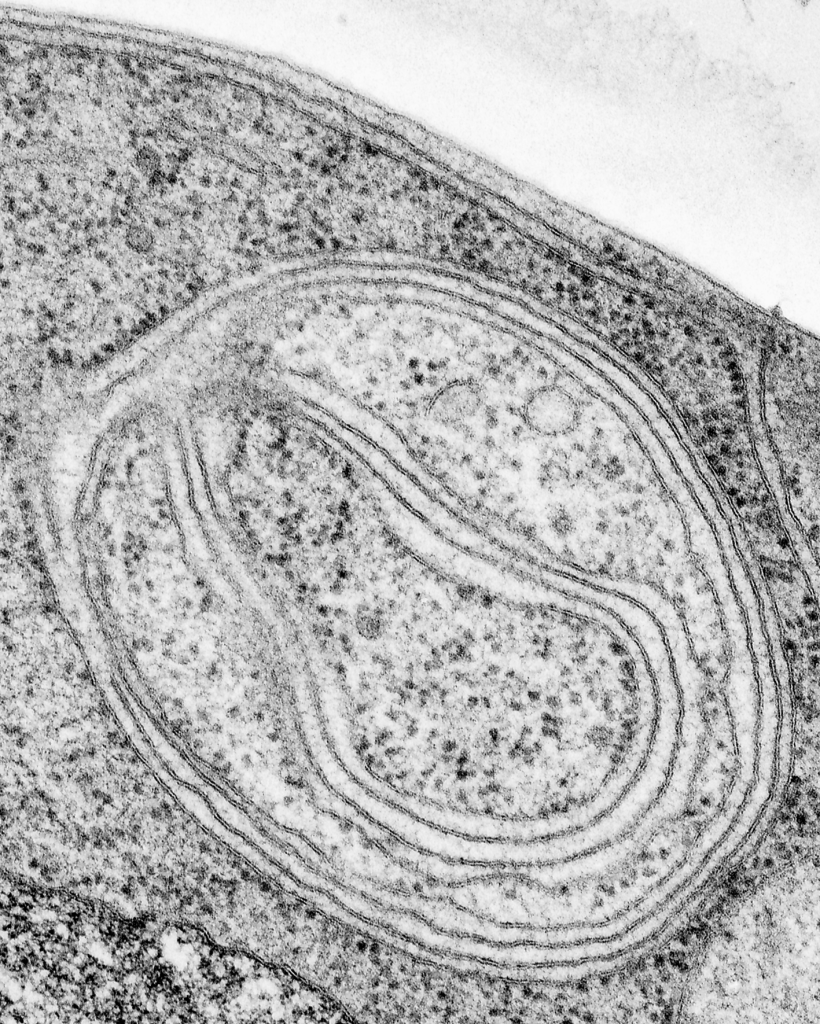Autophagy is an important disposal mechanism in our bodies, and it is not as scary as the word sounds. The word autophagy is derived from Greek, with ‘auto’ referring to ‘self’ and ‘phagy’ meaning ‘eating’. Autophagy is important for the growth and development of our cells. It helps to restructure our cells and plays a role in our body’s response to stress, like infection or starvation.
How does autophagy work?
Autophagy is best compared to a very small recycling depot. Our cells are made of many large and small molecules, also called cellular components. For the sake of our analogy, think of these components as the paper and glue that make up the shipping package from an Amazon delivery. When your Amazon box either is damaged or you no longer have a use for it, you put it in your recycling bin. You will monitor how full or empty it is. When full, it is placed at the curb to be picked up on recycling day.

Your neighbourhood’s recycling pick-up day signals to the city workers what part of the city they need to travel to. The bins outside further specify which houses need their recycling picked up. The contents are taken to the depot, where they are sorted, and the materials can be recycled. Special machinery is used to shred and pulp the cardboard, breaking it down into fibers which are used to make new boxes and other paper products.
When cell components are no longer working properly, like the Amazon box, they must be removed and replaced. Molecules, called protein kinases, monitor how well the cell is working – this is you! Deficits activate these proteins, signaling the need for replacement components and thereby placing your recycling out for pick up. In response to this signal, small pieces of membrane are recruited to an assembly site where they combine to form a half circle – the city workers are here to pick up your recycling! This half circle engulfs the defective cell component(s) and then assembles the rest of the circle to form an autophagosome – your box has finally made it to the depot.
The autophagosome then fuses with the membrane of another storage compartment, called a lysosome, which contains digestive enzymes. These enzymes, like the machinery used to shred cardboard, eat away at the inner membrane of the autophagosome. Once they have worked their way through, they can then target its contents – the cardboard is now being worked into a pulp. The enzymes reduce the damaged goods, inclusive of proteins, into amino acids, sugars, and nucleotides. These products can be either removed from the cell or used for nutrients and energy, just like the processed cardboard fibers reused for other products.
What happens when autophagy does not work?
Looking at spinocerebellar ataxias specifically, some are caused by genes that have a polyglutamine expansion. This type of mutation gives cells the wrong instructions for protein folding. These misfolded proteins huddle together in the brain stem which regulates basic functions like breathing; the cerebellum which coordinates voluntary movements; and the basil ganglia which fine tunes these voluntary movements. When autophagy is working properly, the protein clumps can be cleared away easily. When autophagy is defective, as in spinocerebellar ataxias, the cell cannot get rid of these clusters. The proteins continue to accumulate and are toxic to neurons, contributing to the pathology of neurodegenerative disease.
If you would like to learn more about autophagy, take a look at these resources by the Merriam-Webster and our past Snapshot on Protein Degradation.
Snapshot written by Katie Neuman and edited by Celeste Suart.










